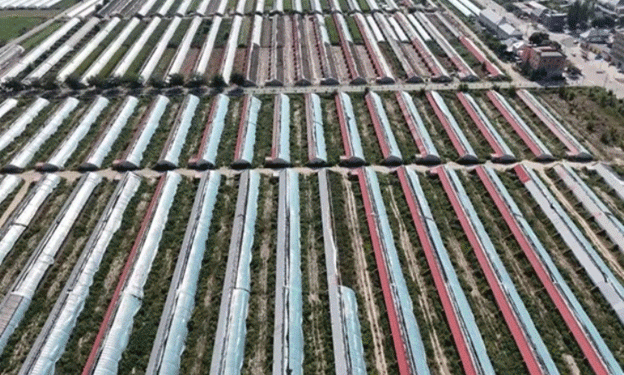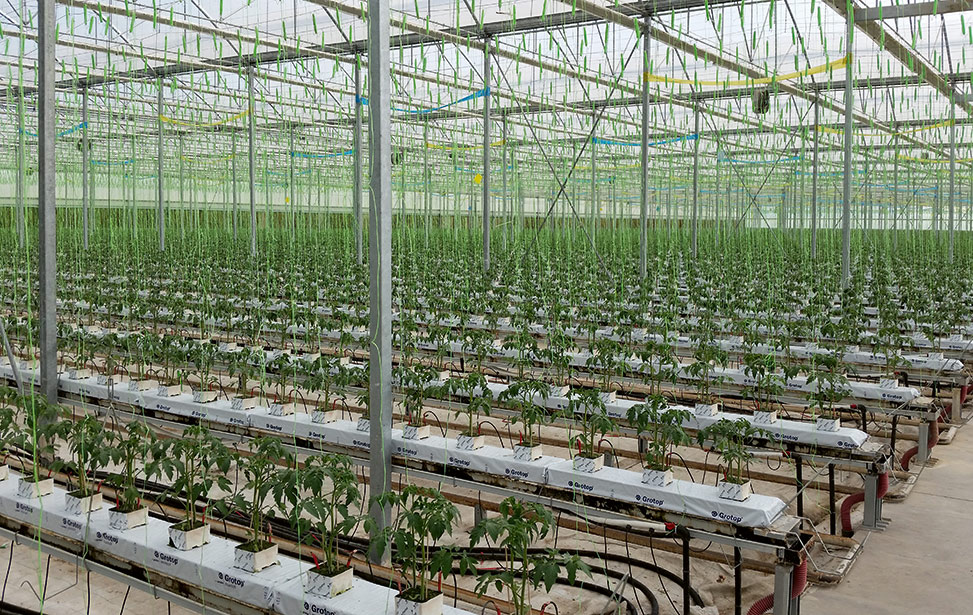Chabuchar County’s journey into modern facility agriculture began in the 1990s. Initially, small, rudimentary greenhouses were used to cultivate vegetables. According to Ma Chenglai, Chairman of the Xinliang Vegetable Cooperative, the first attempts at facility agriculture involved simple structures made from wooden sticks and small earthen walls. This basic setup provided a modest income, which sparked local interest and led to the expansion of greenhouse farming in the area.
By 1994, Chabuchar County had established 1,500 acres of greenhouse vegetables, producing 3,500 tons of vegetables worth over 5 million yuan. The early adoption of steel-frame greenhouses and advanced technologies laid the foundation for significant agricultural improvements.
Modern Advances and Impact
The turn of the 21st century marked a period of rapid development for facility agriculture in Chabuchar County. The introduction of modern intelligent greenhouses and updated cultivation technologies revolutionized the sector. By 2021, the area dedicated to facility-grown fruits and vegetables reached 54.98 hectares, producing a total of 20,854 tons of produce valued at 47.29 million yuan.
The advancements in technology, such as the use of soil-less cultivation techniques in high-standard greenhouses, have led to increased yields and improved produce quality. For instance, high-standard glass greenhouses at the Liangfan Farm now produce organic vegetables that meet national standards. This facility, covering over 12,000 square meters, yields approximately 30 tons of organic produce annually, filling a crucial gap in the local market for organic vegetables.
Technological Integration and Market Expansion
Recent innovations at Liangfan Farm include the adoption of integrated water and nutrient systems, standardized facility practices, and digital management techniques. These advancements have enabled the introduction of new crop varieties, such as black and green tomatoes and new types of plums. The farm’s produce now not only meets local market demands but also reaches broader markets, including significant exports to Guangdong.
The growth of facility agriculture in Chabuchar County has resulted in substantial economic benefits. With 417 greenhouses and 1,320 small hoop houses, the area produces a diverse range of vegetables and fruits, including tomatoes, zucchini, cucumbers, and melons. Each greenhouse generates approximately 10,000 yuan in income, providing employment for over 200 local workers.
The transition from traditional to modern facility agriculture in Chabuchar County exemplifies how technological innovation can drive agricultural productivity and economic growth. By leveraging advanced greenhouse technologies and sustainable practices, the region has significantly improved crop yields and quality, meeting both local and broader market demands. This success story highlights the potential for facility agriculture to transform rural economies and enhance the livelihoods of farmers.










